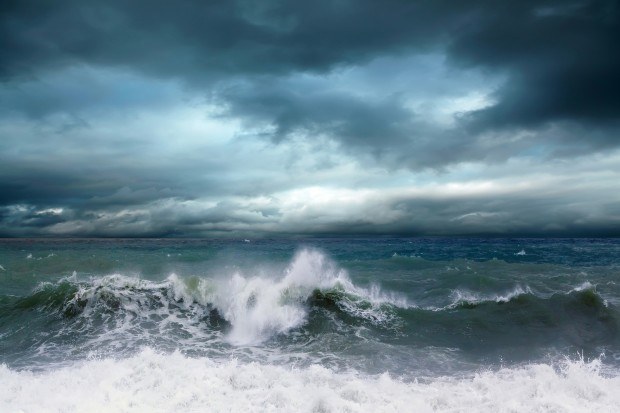Tropical Storm Colin moved out to sea early Tuesday after knocking out power to thousands, prompting Florida Governor Rick Scott to declare a state of emergency. The threat of a storm surge flooding shifted to the Atlantic Coast from the Gulf of Mexico.
The system may bring 1 to 3 inches (7.6 centimeters) more rain across eastern North Carolina and central Florida through Tuesday, the National Hurricane Center said in a bulletin at about 5 a.m. New York time. A tropical storm warning was dropped for the Gulf Coast and part of the Atlantic Coast while one remained in place from Altamaha Sound, Georgia, to Oregon Inlet in North Carolina.
About 26,000 customers had lost power in Florida and Georgia as of 7:45 p.m. New York time on Monday, utility data compiled by Bloomberg show. Orange-juice futures jumped to the highest in more than four years Monday on speculation that the storm would shrink the Florida crop. Colin is forecast to move out to sea on a northeastward trajectory, becoming post-tropical early Wednesday, according to the hurricane center in Miami.
“Some increase in strength is expected during the next 24 hours,” the hurricane center said in its bulletin. “However, Colin is also expected to lose its tropical cyclone characteristics by tonight.”
Scott declared a state of emergency in 34 counties. Franklin County told residents in low-lying areas and in mobile homes they should leave before the storm arrived.
Colin, with top winds of 50 miles (80 kilometers) an hour, was centered about 110 miles northeast of Jacksonville, Florida, moving at 31 mph, the hurricane center said.
Colin is the third named storm of 2016 and the second in about a week. It comes less than a week into the official Atlantic hurricane season. Hurricane Alex, the first storm of the year, formed in the mid-Atlantic in January. A storm gets a name when its winds reach tropical-storm strength of 39 mph.
Eastern Pacific
In the eastern Pacific, the first tropical depression of the year has formed and is about 110 miles south of Salina Cruz, Mexico, the hurricane center said. The storm’s top winds are 35 mph, just below tropical-storm strength.
A tropical storm watch has been posted from Puerto Escondido to Boca De Pijijiapan, meaning conditions could deteriorate in the next two days. It could bring as much as 10 inches of rain and cause life-threatening flash floods and mudslides in the Mexican states of Oaxaca, Chiapas, Tabasco and eastern Veracruz.





















 Good Times for U.S. P/C Insurers May Not Last; Auto Challenges Ahead
Good Times for U.S. P/C Insurers May Not Last; Auto Challenges Ahead  NOAA Announces Latest AI-Driven Global Weather Models
NOAA Announces Latest AI-Driven Global Weather Models  Underwriter, Actuary Fears of AI Drop; Work Needed on Collaboration
Underwriter, Actuary Fears of AI Drop; Work Needed on Collaboration  Breaking: Andersen to Replace Zaffino as CEO of AIG on June 1
Breaking: Andersen to Replace Zaffino as CEO of AIG on June 1 





